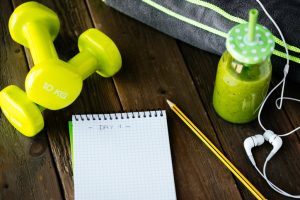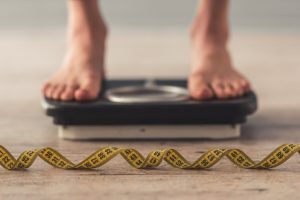A whopping 65% of people set fitness goals at the beginning of the year (Inc.com, 2019). It’s all well and good setting out to improve your fitness. But how will you know if you’re progressing? Here we look at the best fitness tracking methods, and how tracking affects your progress.
The Best Fitness Tracking Strategies
Setting fitness goals is excellent. But tracking is key to success. How can you know whether you’re improving unless you have a baseline to compare it to? After setting fitness goals, there are many different ways of tracking your progress. Plus, you don’t have to fork out for the latest apple watch to do so. This quick guide will run through the best goal setting strategies. We then cover why we should track our progress and the best fitness tracking strategies depending on your goal.
Setting Fitness Goals
Before we look into methods of tracking, we first need a place to begin. This is where goal setting is crucial. Top researchers have found that goal setting positively affects lasting change in physical activity behaviour (Shilts et al., 2004). Studies show that those who set goals were more likely to get results. Alongside this, people can often get lost if they don’t begin by setting fitness goals. So setting a goal is the first step in beginning to track your progress.

When setting goals, ensure they’re SMART. SMART stands for:
- Specific
- Measurable
- Achievable
- Relevant
- Time-bound
Make sure your goals are specific to you, and that you can measure them. Also, to avoid setting yourself up to fail, think about whether they’re achievable.
Furthermore, they should have relevance and meaning to your life. In addition to this, all the best goals have deadlines! You can read our step-by-step guide on setting SMART fitness goals here.
How To Track Your Progress
After setting fitness goals, it’s key to measure our progress. This can be regarding exercise, or body composition. Alongside this, nutrition is a huge part of fitness. Tracking these things gives us motivation each time we improve. It also keeps us accountable and focused on our goals.
There are many ways in which we can track our fitness progress. Smart devices such as fitness watches and heart rate monitors are all very useful in measuring statistics for you to compare each workout. All the best fitness tracking methods all have one thing in common: a consistent measure. How will you measure your progress toward your goal? Decide this first. Many people use steps, heart rate, or time spent exercising to track their fitness progress.
The Best Fitness Tracking Methods for Exercise
After setting fitness goals, it’s a good idea to get clued up on the best gadgets to track your progress. The best tracker I have found is the Myzone Heart rate tracker. Myzone is an innovative wearable heart rate-based system that uses wireless and cloud technology to monitor physical activity.

Myzone monitors heart rate, calories and time exercising. These convert into Myzone Effort Points (MEPs), with a focus on rewarding effort. Achten and Jeukendrup (2003) state that most endurance athletes regularly use heart rate monitors to help them adhere to their planned intensity and track their runs.
Alongside this, I use the Shredify app to track my workouts. This shows me which body part I’m working, keeps a log of the progress I’ve made, and also gives me my plan for the next workout. This means I’m always focused on my training, and motivated to hit my next goal.
The Best Fitness Tracking App for Nutrition
The best fitness tracking strategies don’t just measure exercise. Fitness is about nutrition, too. So this is equally as important to track. MyFitnessPal is excellent for tracking your food. I use this to ensure that I’m eating the right amount of calories per day. Alongside calorie counting, it also measures your macronutrients by tracking grams of protein, carbohydrate, and fat. This is helpful if you haven’t logged your food before.
It also comes with a convenient barcode scanner. So you just need to scan foods, and it will automatically bring up the nutritional content.
Fitness Tracking Strategies for Body Composition
Many fitness goals include either weight loss, or muscle gain, or a combination of both. One gadget frequently used to measure this type of goals is a bodyweight scale. This has been heavily leaned on to track progress in many body composition goals. Plus, it doesn’t cost half of what a heart rate monitor or fitness watch does.
But the weighing scale has its limitations. Although your body may have lost weight, we don’t know where that weight has gone from and also whether it’s muscle or fat. This means it may not be the best fitness tracking device for body composition.

An equally as cost-effective way to track your body composition progress is to take pictures. Using pictures to track your progress could be one of the best fitness tracking strategies for any body composition goal. Many people don’t see improvement in themselves because they see themselves every day and can’t recognise the body changing. Having a photo taken say at week 1 and then at week 12 will help you to see the progress you’ve made.
Skin Calipers and Body Fat Percentage
One of the best fitness tracking strategies for body composition is measuring body fat percentage. This can be done with the use of skin calipers. It’s important to note here that you need to maintain a certain body fat percentage for good health. The NHS recommends a healthy body fat percentage for women is between 15-30%. For a male, this is between 18-24%. However, the right body fat percentage is dependent on how active a person is. Athletes and people into fitness are more likely to have a lower body fat percentage due to the amount of training they do.
Skin calipers are fantastic for measuring body fat percentage. The calipers measure the thickness of a fold on your skin with its layer of fat. Measurements are taken from different areas of the body. Then these measurements are calculated to come up with a total body fat percentage score. The areas of analysis include the triceps and biceps, as well as the shoulder blade and just above the iliac crest. This might seem like the best fitness tracking method for body composition goals. However, one drawback is that you need a professional to do this for you to ensure accurate measurements are taken.
Conclusion
We’ve covered a multitude of ways to measure your fitness progress. But it’s important to find the best fitness tracking strategy for you. A combination of a good fitness goal and an accurate way to track your progress will ensure you’re on the path to success. So if you haven’t set your goal already, why not read our post on using the SMART acronym to track your fitness goals?
